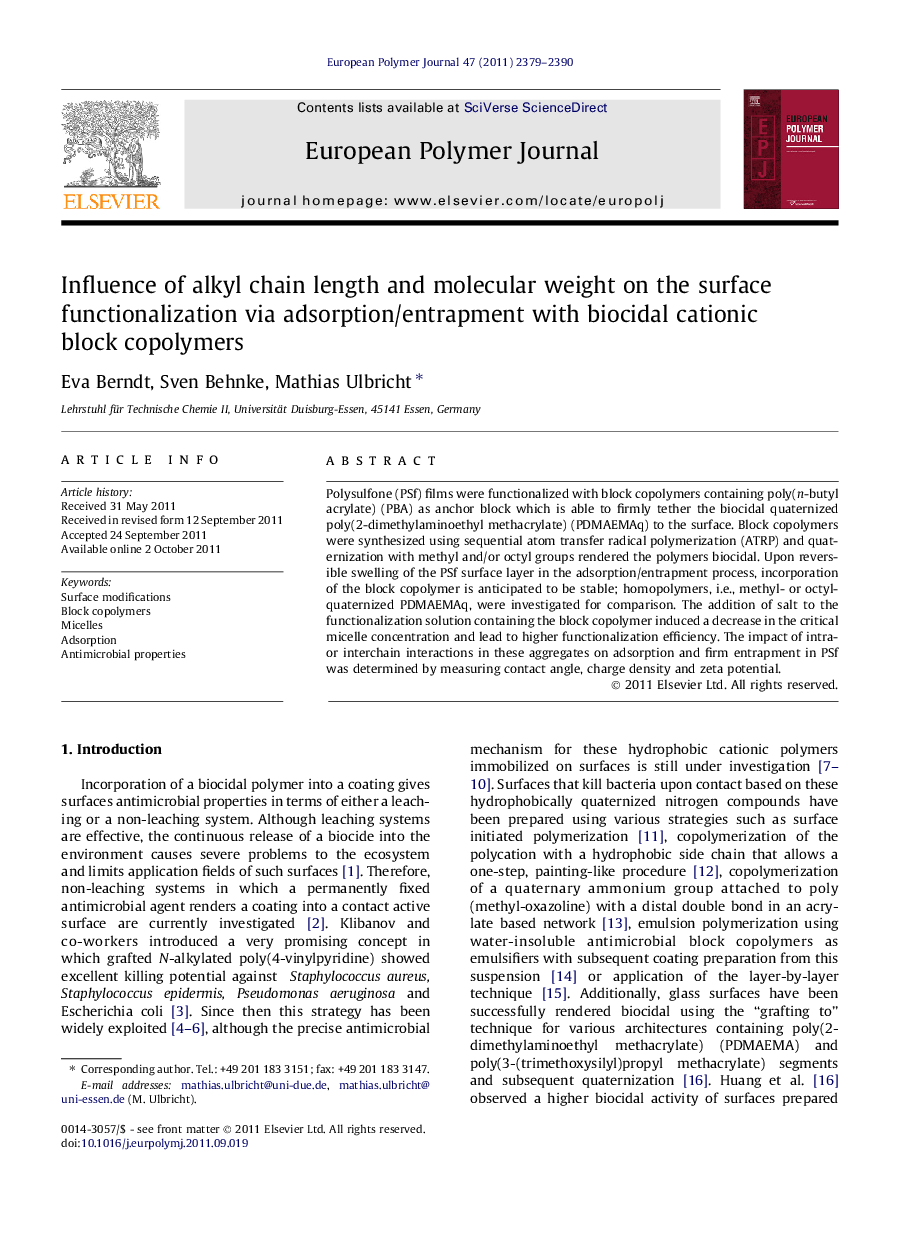| Article ID | Journal | Published Year | Pages | File Type |
|---|---|---|---|---|
| 1400648 | European Polymer Journal | 2011 | 12 Pages |
Polysulfone (PSf) films were functionalized with block copolymers containing poly(n-butyl acrylate) (PBA) as anchor block which is able to firmly tether the biocidal quaternized poly(2-dimethylaminoethyl methacrylate) (PDMAEMAq) to the surface. Block copolymers were synthesized using sequential atom transfer radical polymerization (ATRP) and quaternization with methyl and/or octyl groups rendered the polymers biocidal. Upon reversible swelling of the PSf surface layer in the adsorption/entrapment process, incorporation of the block copolymer is anticipated to be stable; homopolymers, i.e., methyl- or octyl-quaternized PDMAEMAq, were investigated for comparison. The addition of salt to the functionalization solution containing the block copolymer induced a decrease in the critical micelle concentration and lead to higher functionalization efficiency. The impact of intra- or interchain interactions in these aggregates on adsorption and firm entrapment in PSf was determined by measuring contact angle, charge density and zeta potential.
Graphical abstractThe type of quaternization of poly(n-butyl acrylate)-block-poly(2-dimethylaminoethyl methacrylate) determines the solution properties of the polymer leading to a distinctly different adsorption behavior on polysulfone films for the block copolymer quaternized with methyl groups than the polymer with quaternized with long octyl and methyl groups.Figure optionsDownload full-size imageDownload as PowerPoint slide
